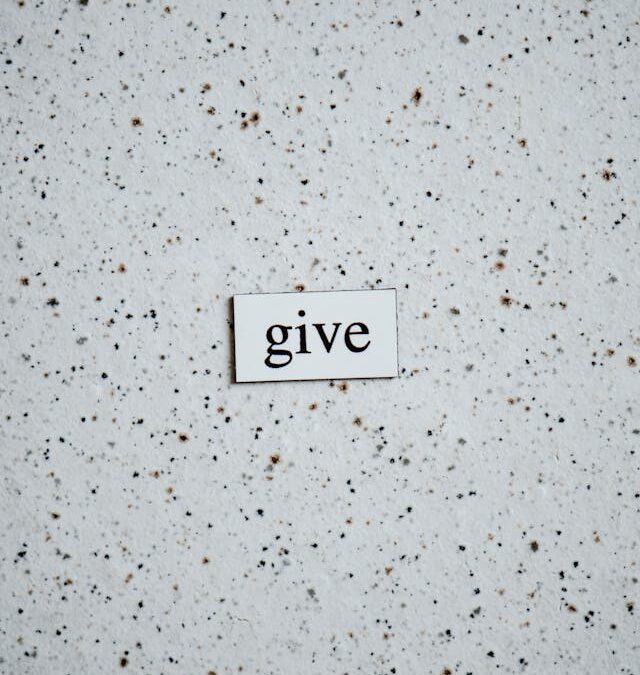Many non-profit organizations and charities depend on donations to fund their various humanitarian programs. Annual giving by organization members, concerned community members, corporate sponsors, foundations, estates, and even those looking to avail themselves of tax write-offs go a long way toward ensuring that support can be provided to the disenfranchised and at-need populations served by these organizations.
Over the past 10 years, the total amount donated in the US, adjusted for inflation, has grown at a little under 2% per year. This relatively low rate of growth has been due to a number of factors, ranging from inflation to changes in the tax laws that disincentivized giving. That being said, the increased need during the COVID-19 pandemic did motivate added charitable giving in some areas, resulting in a slightly higher average rate of growth than the previous decade from 2005 to 2014.
Outsized Growth in Giving Expected Over the Next Two Years
Research indicates that this era of relative sparsity in regards to charitable giving is coming to an end, as recent estimates indicate total charitable giving in the US will grow by 4.2% in 2024, and another 3.9% in 2025, according to the Indiana University Lilly Family School of Philanthropy. This projected increase in giving is due to a number of factors, including recent stock market gains, a higher average net worth, and greater average personal income.
This expected increase in total giving is higher than the 10-, 25-, and 40-year annualized average growth rates, and reflects a changing paradigm in giving among different sectors. Notably, giving by foundations is expected to grow by more than 10% in 2024 and another 5.3% in 2025, largely driven by gains in the stock market. Foundations are required to give at least 5% of their assets each year, and the growth of foundation endowments are largely fueled by stock market gains.
Giving by estates is expected to grow by 2.7% in 2024, and a further 5.5% in 2025, which is well above the 10-, 25-, and 40-year average. This increase is likely due to improving consumer sentiment, which is recovering after less-than-enthusiastic levels in 2023. Meanwhile, corporate giving is expected to increase by 1.9% in 2024 and another 2.6% in 2025. While this growth is lower than the historical average, it is offset by the rapid growth expected in giving by foundations and estates.
Interestingly, despite the fact that the majority of annual charitable giving comes from individual and household donations (as much as 75% before the 2007 financial crisis, and between 62 and 64% in 2024-25), there has been a notable decrease in the overall proportion of giving by individual donors over the past decade, and that is expected to continue. Individual and household giving is expected to grow by only 2.6% in 2024 and 3.4% in 2025, which is well below the overall rate of giving, indicating an ongoing shift in demographics when it comes to charitable giving.
It is important to bear in mind that these estimates are projections based on the socioeconomic environment at the time of the study. Unexpected global events and circumstances, such as a major natural disaster or another pandemic, could change these projections in either direction.
Charitable Giving among the US Muslim Population
There are an estimated 3.5 million Muslims in the US, making up a little more than 1% of the US population. Charitable giving among the American Muslim population has historically followed a relatively predictable pattern—one that is driven by zakat, one of the five pillars of Islam. Zakat requires people of the Muslim faith to donate a portion of their wealth to charity—typically a minimum of 2.5%—and is aimed at addressing poverty, as well as achieving a general redistribution of wealth. Zakat is often given during the holy month of Ramadan, which stretched from mid-March through mid-April in 2024.
Historically, nearly 70% of American Muslims always give zakat, according to a study by the Muslim Philanthropy Initiative at Indiana University. Muslims in the US donated at least $4.3 billion in 2021, $1.8 billion of which was made up of zakat giving. A number of specific demographics in the US Muslim community are particularly likely to engage in zakat giving during Ramadan, including married couples, women, individuals in their 30s, registered voters, those who identify as very religious, and those who earn between $50,000 and $75,000. Other popular times of the year for zakat giving include the Eid al-Adha holiday (June 14-16 in 2024) and at the end of the year.
While many people assume that the majority of charitable giving by Muslims in the US is sent overseas, the reality is that approximately 85% of the $4.3 billion donated by Muslims remains in the US. In addition, around 40% of those funds go to non-Muslim-directed organizations. Giving patterns are also influenced by needs. For example, during Ramadan in 2024, there was a marked increase in generous giving to charities that are supporting people in Gaza and other regions suffering through war, geopolitical crises, and natural disasters.
Islamic Relief USA
The nonprofit Islamic Relief USA (IRUSA) has a prominent place in American Muslim philanthropy. As one of the largest faith-based Islamic charities, IRUSA is guided by the teachings in the Quran and the prophetic example to work toward a world free of poverty. The organization provides humanitarian development and emergency relief to poor and marginalized communities across the US and abroad, focusing on food aid, healthcare, education, clean water, and care for women, children, and refugees. To learn more about IRUSA’s work and how you can support it, go to IRUSA.org.
